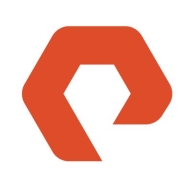


LizardFS and IBM Spectrum Scale are competitors in the distributed storage solutions market. IBM Spectrum Scale appears to have an advantage due to its rich features and capabilities, while LizardFS attracts with its pricing and customer support.
Features: LizardFS is valued for simplicity, scalability, and fault tolerance, specifically benefiting small to medium enterprises. IBM Spectrum Scale offers robust data management, advanced metadata handling, and superior scalability, tailored for large-scale environments. LizardFS is noted for ease of use, contrasting with IBM Spectrum Scale’s extensive feature set.
Ease of Deployment and Customer Service: LizardFS provides straightforward deployment and excellent customer service, making it ideal for smaller teams. IBM Spectrum Scale has a more complex deployment process requiring skilled technical expertise, supported by comprehensive documentation and professional services.
Pricing and ROI: LizardFS is a cost-effective solution with quicker setup, providing favorable ROI for budget-conscious users. IBM Spectrum Scale involves higher setup costs that correlate with its extensive features, offering high ROI for large enterprises seeking advanced storage solutions.


FlashBlade is the industry’s most advanced scale-out storage for unstructured data, powered by a modern, massively parallel architecture to consolidate complex data silos (like backup appliances and data lakes) and accelerate tomorrow’s discoveries and insights.
Software Defined Storage LizardFS is a distributed, scalable, fault-tolerant and highly available file system. It allows users to combine disk space located on many servers into a single name space which is visible on Unix-like and Windows systems in the same way as other file systems. SDS LizardFS makes files secure by keeping all the data in many replicas spread over available servers. It can also be used to build space-efficient storage, because it is designed to run on commodity hardware. Disk and server failures are handled transparently without any downtime or loss of data. If storage requirements grow, it's possible to scale an existing SDS LizardFS installation just by adding new servers _ at any time, without any downtime. The system will automatically move some data to newly added servers, because it continuously takes care of balancing disk usage across all connected nodes. Removing servers is just as easy as adding a new one.
We monitor all Software Defined Storage (SDS) reviews to prevent fraudulent reviews and keep review quality high. We do not post reviews by company employees or direct competitors. We validate each review for authenticity via cross-reference with LinkedIn, and personal follow-up with the reviewer when necessary.